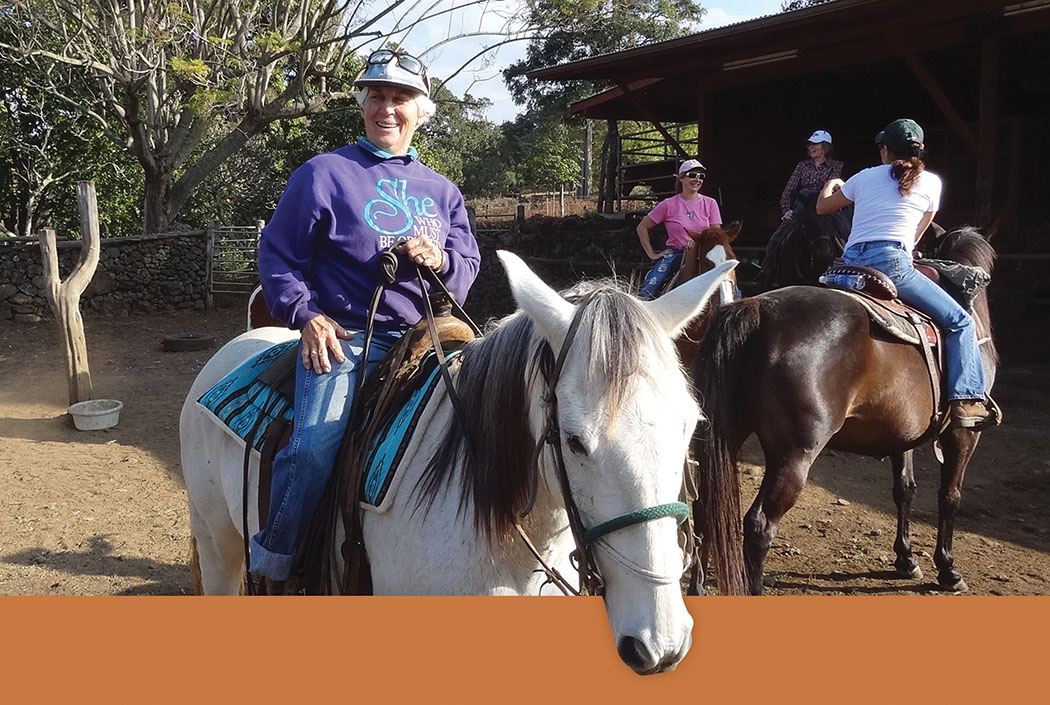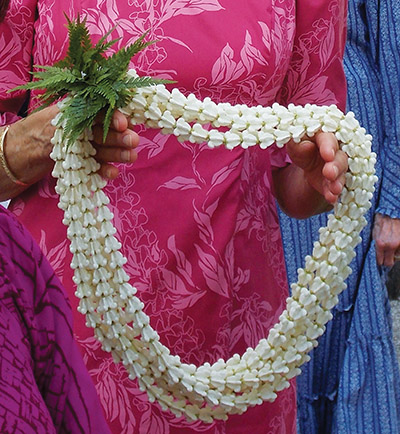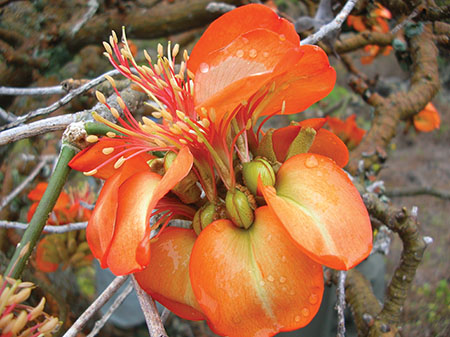
In The Shadow Of The Sandalwood: The Plight Of The Wiliwili
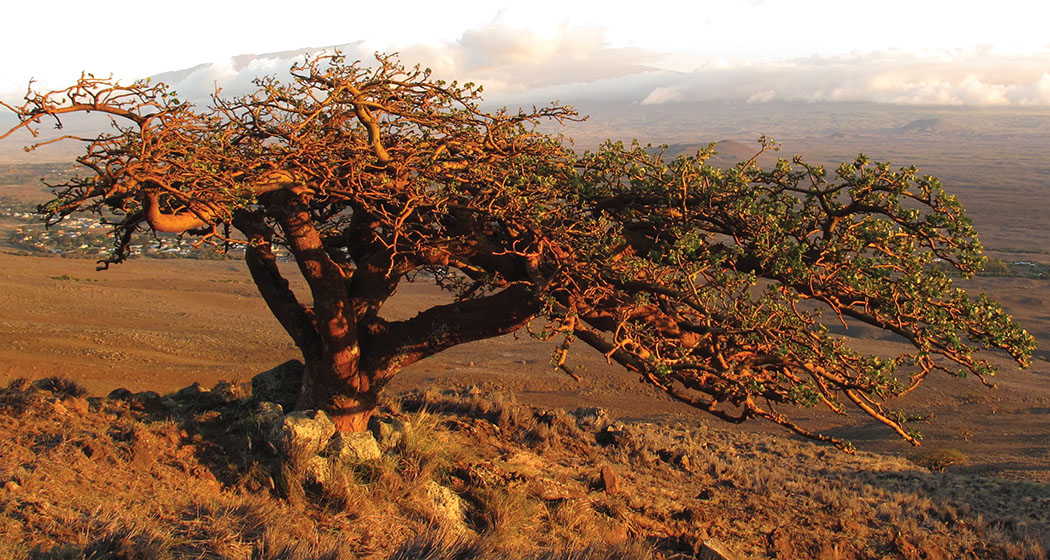
By Stig Lindholm
In Hawaiian legend, when the god Kāne threw his calabash into the void of space, everything Hawai‘i was created: the sky, the earth, and the ocean. Then, in and upon those mediums, Kāne bestowed life. To the god Rangi, aka Wākea, he entrusted the sky, and to the goddess Pāpā the earth, while to Kanaloa he gave the care of the ocean. Kāne decreed that a great chief would rule over his creation and to that chief the god Lono would provide the sustenance of coconut, breadfruit, sweet potato, and taro. While in the forests, the god Kū would grow, for the chief’s practical use, great trees of koa, candlenut, hau, and the wiliwili.
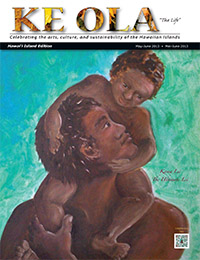
Hawai‘i was blessed with the resources of many more trees than the wiliwili, all worthy of mention. However, this is an account of one man’s fellowship with the Hawai‘i Island wiliwili and his aspiration for its future. A story about a tree that exudes the aura of a wise uncle—a character who has witnessed life’s passage, a soothsayer, an oracle.
The wiliwili stands resolute, unwavering against the odds. Gnarled orange trunk and tangled canopy, deciduously naked through the dry season, then dressed in a blaze of blooms. Pollinated by songbirds to yield bean pods that twist open, revealing bright red seeds that drop with the heavy rains of autumn, encouraging winter leaves to sprout and coaxing the birth of new life.
The wiliwili, Erythrina sandwicensis, is a flowering tree in the pea family Fabaceae and is the only indigenous Hawaiian wiliwili. While there are seven other varieties of wiliwili growing on the islands, often planted as street side shade trees or windbreaks (two non-endemic varieties are located at the front of Parker Square in Waimea), there is only one wiliwili gifted by the Gods.
Wiliwili means ‘repeatedly twisted’ in Hawaiian and was the name given to the tree due to its distinctively twisted seed pods that contain between one and three cherry-red or yellow-orange seeds once used to make lei. The seeds of the endemic wiliwili sink in water, while the seed pods of the non-endemic varieties contain several smaller brown seeds that, as if to signify further the differences between the genuses, float in water.

The wiliwili grows to between 15 and 30 feet. Young trees develop 1/4 to 1/2 inch grey-black spines, which is unusual as the first wiliwilis had no requirements to fend off ungulates or other predators. The trunks of mature trees lose their spines and develop the distinctive orange cast caused by terrestrial algae.
The wiliwili is one of Hawai‘i’s few deciduous trees, shedding its leaves in the dry season to preserve water reserves throughout the hot summer. Alas, its deciduous nature has been the demise of many landscaped wiliwilis, especially saplings and young trees, which take on the impression of dead wood amongst surroundings of tropical perennials and are often cut down. However, it is at the end of this deciduous and apparently lifeless period that the wiliwili bursts into color with the distinctive clusters of claw shaped yellow orange, salmon, pastel green, or white flowers, and occasionally a synthesis of all the colors blossoming together on the same tree.
Due to the wiliwili’s light weight and buoyant nature, wood from the larger trees was used to shape the papa he‘e nalu (surfboards) ridden by the island’s ali‘i and to make the ama for canoes. Smaller pieces were used for the floats on fishing nets. Ash from burnt wood was used as a dye, and the kahuna la‘au lapa‘au brewed a potion from the flowers of the wiliwili to treat venereal disease.
Once you have been introduced to the wiliwili, it stands out on the skyline: prominently conspicuous across the lava fields of Waikoloa, interspersed amongst other dry forest trees on Hualālai’s Pu‘u Wa‘awa‘a reserve, and scattered across the barren slopes of Waimea’s Pu‘u Kawaiwai.
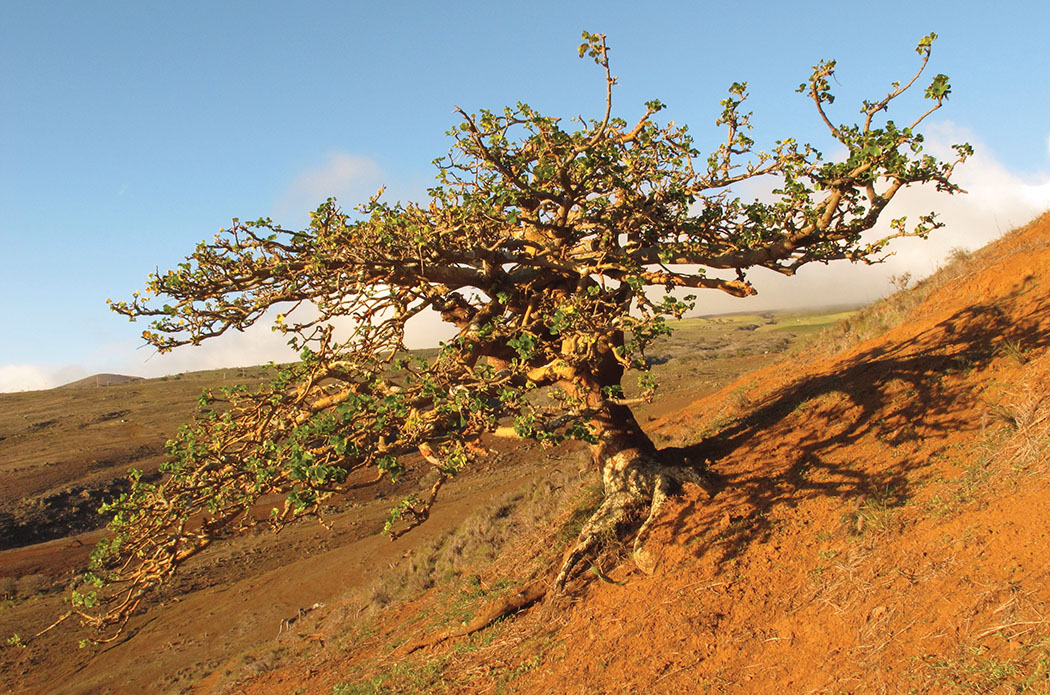
The wiliwili tree is our botanical link between past and present, yet its place in our future is precarious. Many Hawai‘i Island wiliwilis stand 200 years old—pushing the limits of their lifespans, and for the most part are not succeeded by offspring. Survival of this characteristic island tree is dependent on our support, otherwise, like the island’s former sandalwood population, the wiliwili might become historical narrative.
More than 200 years ago, the slopes of Hawai‘i Island’s mountains swayed to the dance of sandalwood. On the dry forest southwest slopes of the Kohala mountains, sandalwood stood alongside other indigenous trees including the Williwilli. When the commercial value of the sandalwood was recognized, and Hawai‘i Island’s forests were plundered, the Kohala williwilli trees were left solitary figures in a harsh and arid scrubland.
Organic architect Frank Lloyd Wright once said, “The best friend on earth of man is the tree. When we use the tree respectfully and economically, we have one of the greatest resources of the earth.”
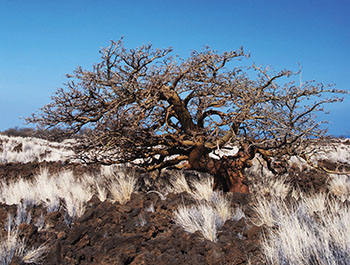
For the sandalwood—far from Wright’s suggestion—economics outweighed respect. Survival of all species is about finding a balance and then balancing it.
Sometimes we learn from our environmental blunders, sometimes we don’t, and occasionally, arising from the demise of one species, our attention is drawn to the plight of another. For the most part, becoming aware of the environment, then caring enough to nurture it requires a degree of awareness and respect for our surroundings. Hawai‘i radiates an aura that fosters respect for all Creation and brings us closer to that place.
From time to time we do well to be reminded of our follies, then to be inspired by stories of mankind’s bond with Mother Nature.
“We often look elsewhere in the world for an environmental cause; we forget what issues lie at our feet,” says Hai On, friend and protagonist for the Pu‘u Kawaiwai, Kohala wiliwili trees. “These guys have a story to tell. Some of them have been around for 200 years. They grew up with the sandalwood, and they witnessed its downfall.”
Whether your belief is in the Divine Creation or Darwin’s theory, the blessing of Hawai‘i’s botanical genesis is formidable.
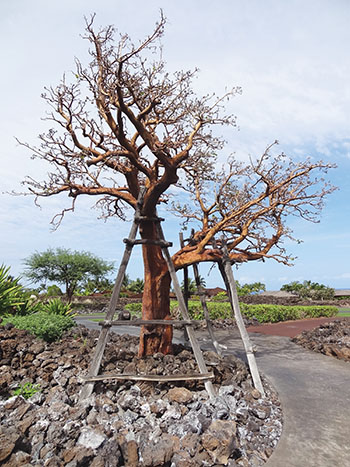
The island of Hawai‘i is home to 11 of the world’s 13 climate zones, from polar tundra at the summits of Mauna Kea and Mauna Loa, to desert on the lava fields of South Kohala, rainforest on the windward east coast and no-forest on the west. On the leeward slopes of the island’s volcanic mountains, there once flourished abundant dry forest habitats. Yet, since human settlement of the island and the introduction of non-endemic species, the dry forests have shrunk 90% to cover a mere 1.4% of the Island’s 4,000 square miles. By ratio, Hawai‘i’s dry forest regions might be considered more endangered than the Amazon’s rainforest; unless radical steps are taken to preserve and regenerate Hawai‘i Island’s dry forests they will degenerate into the final stages of their lives.
Thankfully, the struggle of the wiliwili has struck a chord, and there are several organizations committed to securing a future for the wiliwili and other dry forest trees. The Waikoloa Dry Forest Initiative is a nonprofit organization that nurtures and protects wiliwilis and other endangered Hawaiian trees in a dry forest sanctuary near Waikoloa village, and The Department of Land and Natural Resources manages the protection and development of the dry forest and other endemic vegetation on the Pu‘u Wa‘awa‘a reserve. Recently, Waikoloa village residents voted by majority in favor of extending the current 25-year lease on the sanctuary for a further 75 years.
“The guys at Waikoloa do a great job,” says Hai. They maintain 275 acres on the outskirts of Waikoloa Village, and the State manages the reserve at Pu‘u Wa‘awa‘a.” These organizations are supported by expert advice regarding botany. They have evolved from founding members into an enthusiastic membership. But there are some who favor a more individual approach. As much a loner as the trees he cherishes, Hai On is spreading a personal message and hopes others will follow his cause.
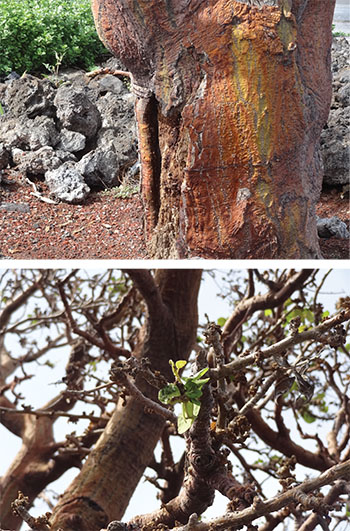
“I’m not an expert,” declares Hai, “but I’m informed. I’ve formed a bond with these trees—an emotional tie. I care about them, and I care enough to help them.” Hai does not profess to be a botanist or an arborist, just a guy willing to give it a go and help out an endangered tree. “If the word gets out and those who know can offer me expert advice then hopefully we can come up with answers to help these wonderful trees.” In the meantime Hai continues to promote a planting program through his wiliwili blog with instruction on seed propagation and nurturing saplings and, given our social media era, naturally–the wiliwili Facebook page.
The Hawai‘i Island wiliwilis are also feature on Evernote (an application for smart phones). “I’d like anyone with similar interests in saving the wiliwili to help me plot their locations,” requests Hai. “If you register with ‘Wiliwili Evernote,’ when you come upon a tree, take a picture, check its location on the map, and I’ll pick up the information.” Hai On maintains a record of all Wiliwili locations known to him and is keen to keep his map up to date with other enthusiasts’ sightings. Along with mapping tree locations, he also maintains charts and calendars recording the development of insect species responsible for attacking the wiliwili.
In 2005, a tiny wasp was discovered to have arrived on the Hawaiian islands—the Erythrina gall wasp—so named when it was discovered that the wasp exclusively favored the wiliwili and laid its eggs on the trees’ leaves causing them to gall. Then, in 2008, after research to establish that no negative consequences would arise from the introduction of another non-endemic species, The Hawai‘i Department of Agriculture released Eurytoma Erythrinae, a tiny wasp, from Tanzania in East Africa, whose eggs, it was discovered, hatched before those of the gall wasp, which then became food for the Tanzanian wasps’ larvae.
There may be a number of factors considered responsible for the decline of the wiliwili, some of them scientifically proven, some of them speculation. Hai has several notions of his own and looks forward to scientific advise to support or refute those.
“There was much celebration when the decline of the gall wasp was noticed following the Tanzanian’s arrival,” says Hai, “I was as happy as everyone else, but I’m not sure the predator [Eurytoma Erythrinae] was entirely responsible. The introduction coincided with the end of a drought. I believe the gall wasp was already on the downside of its cycle. The Tanzanian just helped close the door.”
When the wiliwili stood together with the sandalwood, the island’s dry forests were forests. The wiliwili grew in abundance from oceanside up to 2,000 feet. Theorizing and searching for answers, Hai suggests, “When endemic vegetation grows side by side, the species support each other, sharing nutrition and preventing soil erosion. When one species is removed, to the extent that the sandalwood was, then the void left will be to the detriment of the other.”

It is clear to see that many of the Hawai‘i Island wiliwilis live precarious lives, with those saplings that do make the transition from bean to plant often succumbing to rodents or grazing animals or getting smothered by non-endemic grasses.
The plight of the wiliwili is its struggle to exist against all odds and in the shadow of the erstwhile sandalwood. “If the wiliwili is to survive, it needs our support,” urges Hai.
So, when Wangari Maathai, environmental and political activist, says, “Until you dig a hole, plant a tree, water it and make it survive, you haven’t done a thing. You are just talking,” helping keep the wiliwili an animate characteristic of Hawaiian culture and heritage is more than merely knowing about the wiliwili’s plight, it is about digging the hole and planting the tree. ❖
For more info: WaikoloaDryForest.org; DrylandForest.org
Contact writer Stig Lindholm: stig_lindholm@mac.com
